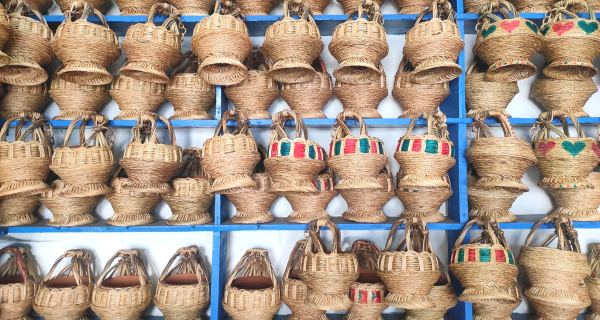Photo Essay: How rural Kashmir prepares for Chillai Kalan

Photo Essay: How rural Kashmir prepares for Chillai Kalan
Kashmir’s harshest 40 days of winter are here. Locally known as Chillai Kalan, temperatures in the Valley drop to as low as -5°C during this period. People in rural Kashmir start preparing for the rough weather as soon as autumn fades and winter signals its arrival. From igniting hamams to stocking hokh suen, the community hold on to traditional practices despite having modern alternatives.

Hamams are communal places — usually there is one in each masjid — which are meant to keep the Valley's residents warm with the fire and conversations. Resembling a sauna, Kashmiri hamams allow for deep relaxation, reduce muscle tension and rejuvenate one’s body. Local hakims prescribe hamams to soothe muscle pain and ease rheumatism. A full-time caretaker known as hamami is appointed to run a mosque hamam. (Photo - Rouf Bhat)
Firewood is placed in the room through a small iron door and the attached chimney outlet lets smoke out. A sizeable copper tank is installed above the fire, which is lit twice daily to heat water.
The popularity of hamams continues unabated. “I bought every possible heating appliance in the last two years, but each of them failed. This pushed me to build a hamam costing almost Rs 1.5 lakh in my newly constructed home,” says Jabbar Mir, a businessman from Kupwara. Happy with this decision, he adds, “It is better to use wood to fuel hamams than electrical heating appliances because electricity does not last long. The facility also helps to develop and maintain a deeper bond among the 10 members of my family as everybody huddles together in a room.” (Photos - Rouf Bhat)
Unlike hamams, there are simple and easily accessible options like kangri to fight frigid winters. The traditional kangri (fire pot) is a portable heater filled with charcoal embers that Kashmiris keep inside their pheran (a traditional knee-length coat) during winter. "I have been making kangri for 15 years now. Scouring the jungle for the raw material to weave the wicker basket perfectly is a time-consuming process," says Javaid Khan, a kangri maker from Kupwara. Some people gather fallen branches, leaves and twigs, and burn them to make charcoal, while others buy it from the market. As pherans are losing popularity among the youth, it has consequently impacted the use of kangri (Photos - Rouf Bhat)

Sun-kissed shades of hokh suen
Snowclad landscapes, especially with winters of this intensity, also prevent access to fresh food. To adapt to this, Kashmiris use hukh suen (dried vegetables). People from Budgam, Bandipora, and upward sun-dry raw vegetables in summers and stock them for winters.
"We start drying vegetables from September, sourcing fresh ones from our kitchen garden. After cutting and peeling, we sun-dry them in a wooden tray for at least 10 days. We also cover the tray with a piece of cloth to keep out insects and sprinkle salt to ward off fungus. Salt helps to drain excess water, too," explains Saida Begum, a housewife from Kupwara (Photos - Rouf Bhat)


Al’e hach is commonly cooked with bottle gourd as its base, together with onion, meat, fava beans and dried tomato and/or dried brinjal. The dried turnips are boiled for a few minutes, before they are fried and stewed with lamb, chicken, cottage cheese or pulses. Even dried brinjal is soaked in hot water before being fried and cooked, commonly with moong dal. Tomato serves two important purposes in Kashmiri cuisine: flavour and colour. Many people also grind dried tomatoes into a powder to use it in curries.
For many, it is really hard to imagine a snowy day without a properly heated room and hokh suen delicacies on their plates.
Cover photo by Rouf Bhat
Edited by Khwaish Gupta
Would you like to Support us
101 Stories Around The Web
Explore All NewsAbout the Reporter
Write For 101Reporters
Would you like to Support us
Follow Us On



.png)
